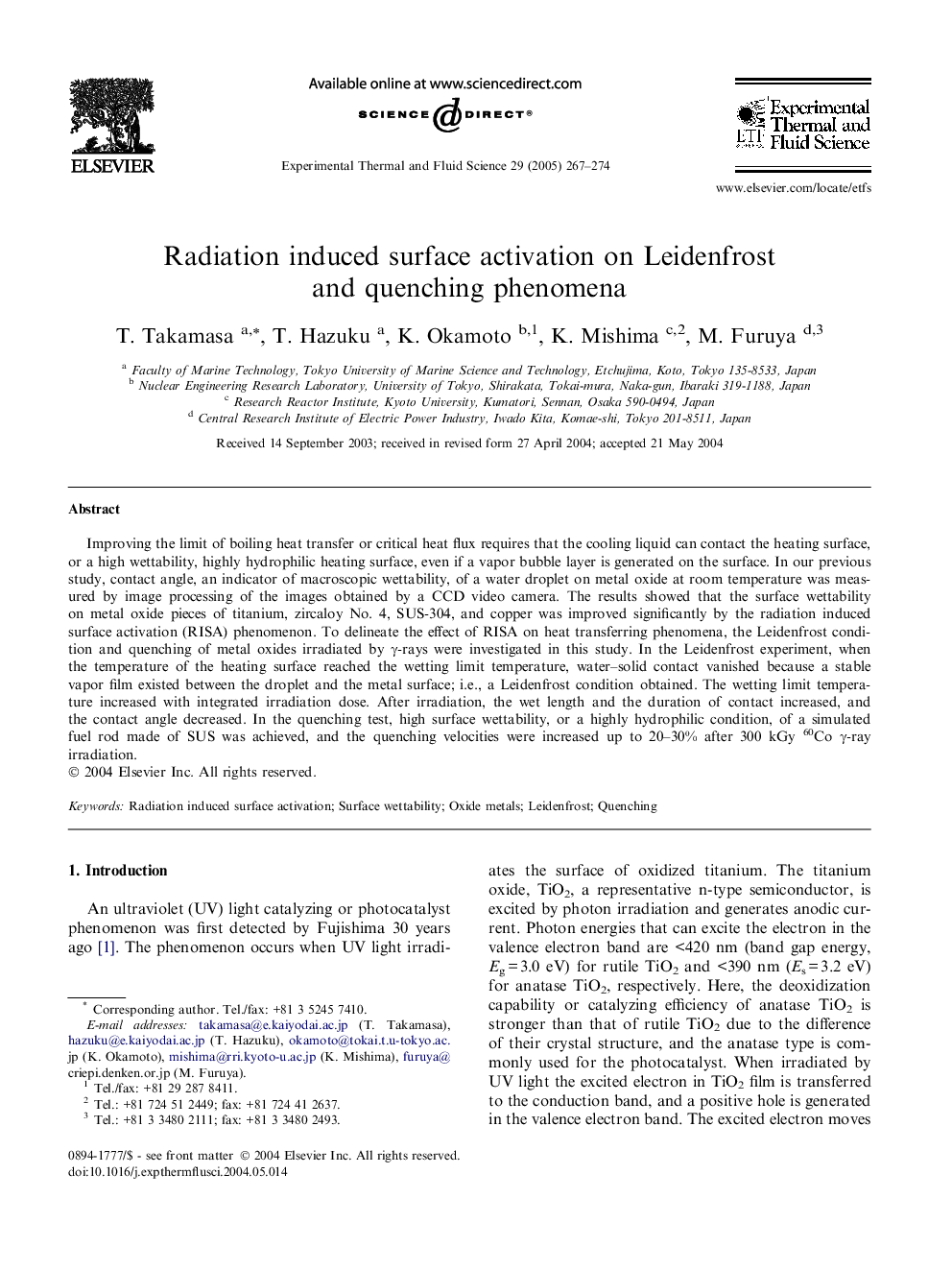| کد مقاله | کد نشریه | سال انتشار | مقاله انگلیسی | نسخه تمام متن |
|---|---|---|---|---|
| 10391841 | 885037 | 2005 | 8 صفحه PDF | دانلود رایگان |
عنوان انگلیسی مقاله ISI
Radiation induced surface activation on Leidenfrost and quenching phenomena
دانلود مقاله + سفارش ترجمه
دانلود مقاله ISI انگلیسی
رایگان برای ایرانیان
موضوعات مرتبط
مهندسی و علوم پایه
مهندسی شیمی
جریان سیال و فرایندهای انتقال
پیش نمایش صفحه اول مقاله

چکیده انگلیسی
Improving the limit of boiling heat transfer or critical heat flux requires that the cooling liquid can contact the heating surface, or a high wettability, highly hydrophilic heating surface, even if a vapor bubble layer is generated on the surface. In our previous study, contact angle, an indicator of macroscopic wettability, of a water droplet on metal oxide at room temperature was measured by image processing of the images obtained by a CCD video camera. The results showed that the surface wettability on metal oxide pieces of titanium, zircaloy No. 4, SUS-304, and copper was improved significantly by the radiation induced surface activation (RISA) phenomenon. To delineate the effect of RISA on heat transferring phenomena, the Leidenfrost condition and quenching of metal oxides irradiated by γ-rays were investigated in this study. In the Leidenfrost experiment, when the temperature of the heating surface reached the wetting limit temperature, water-solid contact vanished because a stable vapor film existed between the droplet and the metal surface; i.e., a Leidenfrost condition obtained. The wetting limit temperature increased with integrated irradiation dose. After irradiation, the wet length and the duration of contact increased, and the contact angle decreased. In the quenching test, high surface wettability, or a highly hydrophilic condition, of a simulated fuel rod made of SUS was achieved, and the quenching velocities were increased up to 20-30% after 300 kGy 60Co γ-ray irradiation.
ناشر
Database: Elsevier - ScienceDirect (ساینس دایرکت)
Journal: Experimental Thermal and Fluid Science - Volume 29, Issue 3, March 2005, Pages 267-274
Journal: Experimental Thermal and Fluid Science - Volume 29, Issue 3, March 2005, Pages 267-274
نویسندگان
T. Takamasa, T. Hazuku, K. Okamoto, K. Mishima, M. Furuya,